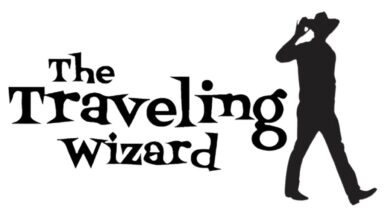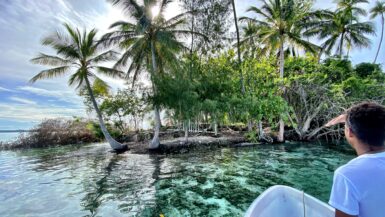Many Americans might be able to name most of the countries in South America, but in the northeast corner of the continent, there’s three nations that are often forgotten; “the Guianas”. In the 16th century, much of Europe had heard about a mystical place known as “the city of gold”. The resulting scramble led to colonialism, and the area Sir Walter Raleigh had penned El Dorado was carved into 5 regions by Spain, England, Holland, France and Portugal.
Fast forward to the 20th century; Dutch Guiana (Suriname) and English Guyana both gained their independence and Venezuela and Brazil absorbed the Spanish and Portuguese colonies, but France never cut its territory loose. So, French Guiana joined France’s 12 other overseas departments and remains one of the least visited parts of South America with just 10,000 tourists a year. There’s a few reasons for this. This part of South America is ignored by cruise ship itineraries and a flight to Cayenne (the capitol of FG) from Miami costs over $2200!
So how do you visit this part of the world without spending a fortune? Don’t fly directly there, unless you’re coming from Paris. Go overland from Suriname.
If you’d like to experience all 3 Guianas, you can fly into Georgetown, Guyana and fly out of Paramaribo, Suriname from Miami. You can visit all three of these countries by traveling overland. At the time of writing, the price is $400. If you’d prefer to skip Guyana, you can just do the roundtrip to Suriname. Suriname is centered between Guyana and French Guiana and bordered by rivers on both sides, so you will need to cross them by ferry to reach either country. It’s fairly straightforward to travel by bus from Guyana to Suriname. Dugla has bus service that departs daily early in the morning.
However you approach this, you’ll find yourself in Paramaribo. It’s the unique capital of Suriname and well worth a visit. Its downtown is a UNESCO world heritage site due to its 17th-18th century colonial wooden buildings. Dutch Guiana’s history of importing indentured servants and slaves created a very diverse population. There’s a mix of Indonesians, Indians, Africans, Jews, Chinese, Indigenous people and Dutch. The majority lives in Paramaribo. Much of the country is jungle and isn’t accessible except by plane or boat. There’s a few roads that connect the other towns as well as the eastern and western borders.
Driving to French Guiana requires a mall leap of faith since Google maps doesn’t show any directions. It’s only about 2 hours to the border and surprisingly, many Suriname locals haven’t ever been. I found that people I asked offered varying accounts of the condition of the road and how to enter the country. Even potential travelers online often write of its challenges. In truth, its one of the easiest borders I’ve crossed.
Rather than deal with trying to ferry a rental car across (which involves lots of paperwork and money) I opted to drive 2 hours to the border, park next to the immigration office with another rental car waiting on the French side in the town of St. Laurent du Maroni. Some travelers choose the bus option, but a car is much more convenient. Transport Interurbain Guyanais bus has 5 departures per day and costs around $30/pp
Suriname requires a permit to enter that costs $40 and can be obtained online before arrival. If you exit through the immigration counter you’ll be leaving the country and will need a new one to return. Since French Guiana is technically a part of France, many visitors won’t require anything other than a passport. The locals just cross over at various points along the shore, skip immigration and no one seems to care. I was warned by locals that if i was driving through the country, police might check my passport for an entry stamp. That never happened.
After being stamped out of Suriname, I followed the boat captain who had “claimed me” to a long motorized pirogue and we sped across the brownish river to the other side. The price was about $5 each and we were given an option to bypass the immigration office. The crossing takes about 10 minutes and voila! You’re in France.
Once we picked up our rental car in St. Laurent, we stopped to grab a few things from a grocery store. We couldn’t believe the difference between the two border towns. Suriname markets are usually dimly lit, run by Chinese families, take cash only and have very limited options. French Guiana, on the other hand was stocked full of French wines and cheeses, meat and baguettes. Prices were lower too, and everyone speaks French, not Dutch. Credit cards work everywhere. The opposite is true in Suriname where cash is king and credit cards are difficult to use. Suriname currency is worthless in French Guiana (and most other countries) so visitors need to find the right balance of having enough, but not too much.
Like Suriname, most of the population of French Guiana lives in the capital as well as a few other cities near the main road connecting St. Laurent Du Maroni to Cayenne. There’s few places of interest to visit between. Kourou is famous for its European space launch site and museum. With its proximity to the equator and eastern position in South America, the city was selected to be the best location for launching rockets gor the European spafe programs. This strategy takes advantage of the earth’s rotation to save on fuel and boosters. If you’re lucky, you might be able to catch a launch on your visit. One of the other attractions in the area is Devil’s Island, the former penal colony where France’s worst criminals were exiled. The prison operated for 100 years (until 1952) and is notorious for its miscarriage of justice to Alfred Dreyfus, accused wrongfully of treason. The film “Papillon” tells the story of Henri Charriere, also a former prisoner who managed to escape the “inescapable prison” and write about it in his autobiography. Boat trips leave daily to two of the islands in the am.
Cayenne, the capital of French Guiana is about an hour east of Kourou. On the way, there’s a zoo with native protected animals, Zoo de Guyane, that’s worth a stop. The sprawling attraction has lots of indigenous creatures as well as a forest bridge walk that takes visitors through the jungle. Honestly I saw as many wild monkeys just running loose as I did in cages. There’s anacondas, jaguars, ocelots and plenty of other varieties of animals you’d be unlikely to ever see in the wild.
Cayenne has a unique feel of its own. A little New Orleans, a little France, a little Cuba all rolled into each one overlooked tourist gem. The crumbling buildings and ancient forts hint of former times of greatness. Sipping a cocktail at Hotel Des Palmistes will make you feel as you’ve stepped back in time. This creole building dates back to 1890; You can find fine dining in places such as Restaurant Paris Cayenne to get fusion French/local thats cuisine. French bakeries dot the city with delectable croissants, cakes and other yummy stuff. The coast is a tidal pool that’s unlikely to win any beauty awards, but the locals gather on the north banks and celebrate aimer la vie as the French do.
A few days should be enough time to see Guyane’s sites and enjoy a little mini French vacation in the jungles of South America.

















